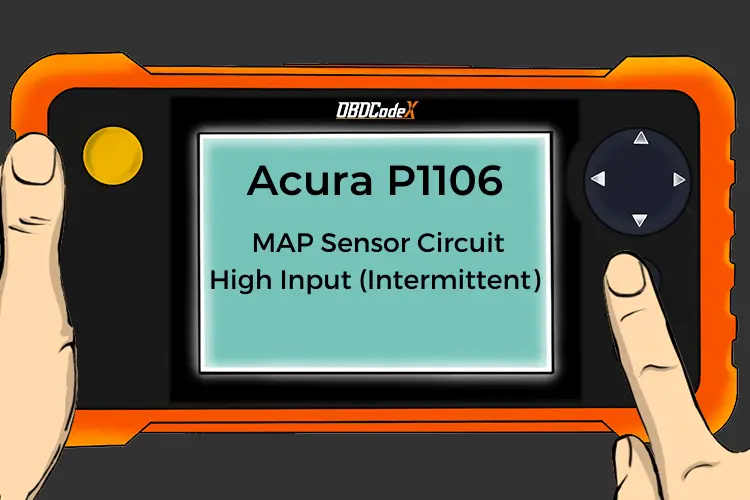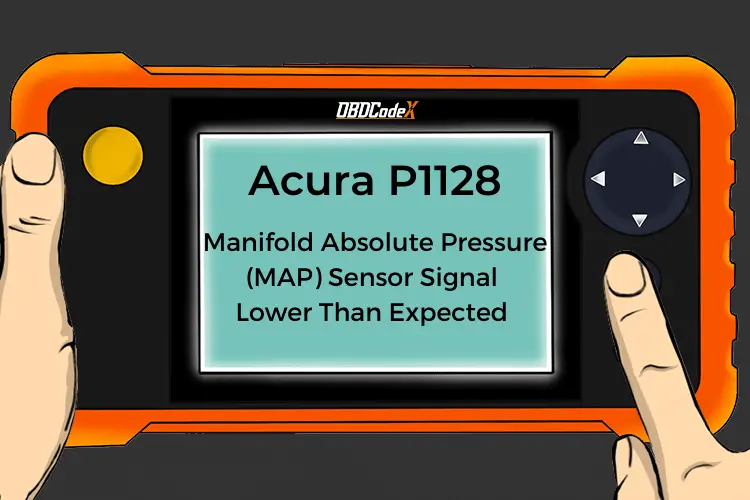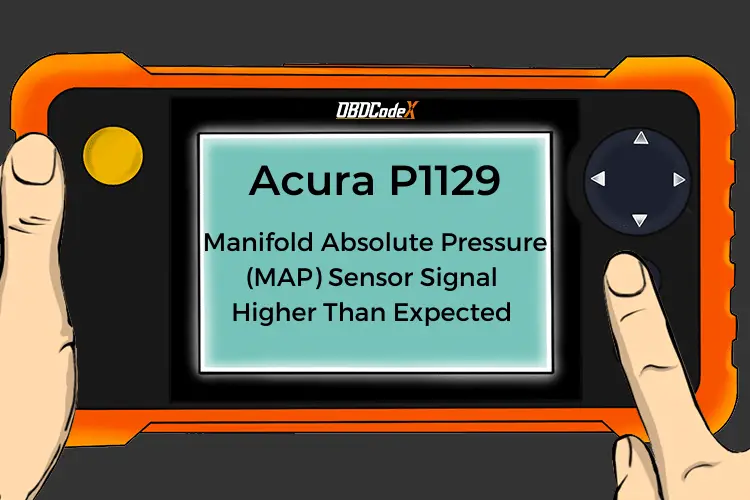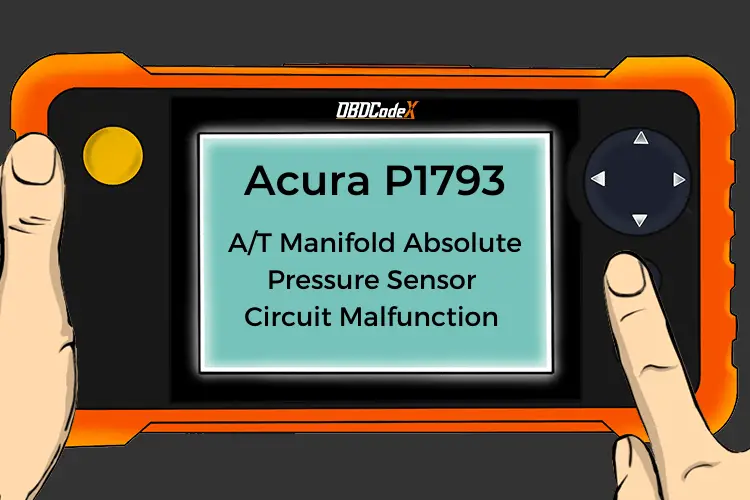P0109: Manifold Absolute Pressure/Barometric Pressure Circuit Intermittent
Is your scanner showing P0109?
No worries. We'll show you what it means and how to deal with it.
P0109: Manifold Absolute Pressure/Barometric Pressure Circuit Intermittent
OVERVIEWWhat Does The P0109 Code Mean?
When I discover that a P0109 code has been stored, I know that it means that the powertrain control module (PCM) has detected an intermittent manifold absolute pressure/barometric pressure reading from the manifold absolute pressure sensor (MAP)or the barometric pressure sensor (BPS).
The MAP sensor is designed to enable the PCM to monitor variations in atmospheric pressure using absolute intake manifold pressure. Atmospheric pressure is directly related to the particular degree of altitude, as it applies to your vehicle.
The MAP sensor is usually supplied with a reference voltage (5-volt) signal, a battery ground, and one (or more) output signal circuit/s.
MAP sensor resistance levels react to changes in absolute manifold pressure. Changing resistance levels in the MAP sensor create variations in sensor output voltage to the PCM.
These varying voltage signals are not only used by the PCM to calaculate fuel delivery and ignition timing, but also compared with programmed specifications.
If input voltage fails to comply with programmed specifications, under certain circumstances for a set period of time, a P0109 will be stored and a malfunction indicator lamp (MIL) may be illuminated.
There are several different systems of monitoring manifold absolute/barometric pressure. Consult your vehicle service manual or All Data (DIY) to determine the exact MAP sensor design of your vehicle.
Several manufacturers use a MAP sensor and a separate barometric pressure sensor. In this case, the MAP sensor is mounted away from the engine and has a vacuum hose connected to it. The degree of engine intake vacuum is gathered by the sensor and input to the PCM, where it is compared with the input signal from the barometric pressure sensor, intake air temperature, and other factors to determine actual altitude (elevation above sea level). If the MAP sensor and BPS input signals vary by more than the specified degree, a P0109 will be stored and a MIL illuminated.
Most automakers integrate the MAP sensor with the BPS. In this type of system, the sensor is mounted to the engine intake manifold. The scanner data stream may reflect only manifold absolute pressure instead of MAP and barometric pressure for this type of system.
What Are The Symptoms Of The P0109 Code?
Symptoms of a P0109 code may include:
- Hesitation on acceleration
- General lack of engine performance
- Diminished fuel efficiency
- Black smoke from exhaust
- Excessively rich fuel exhaust fumes
What Are The Potential Causes Of The P0109 Code?
Possible causes for this engine code include:
- Defective MAP sensor
- Open or shorted wiring for the MAP sensor and/or the BPS
- Faulty BPS
- Corroded connector face at the MAP/BPS sensor
- Defective PCM or PCM programming error
How Serious Is This P0109 Code?
Since the conditions that cause a P0109 to be stored will likely lead to very poor fuel efficiency and engine drivability issues, this code should be addressed urgently.
How Can You Fix The P0109 Code?
Preparation
A good starting point is always to check for technical service bulletins (TSB) for your particular vehicle. Your issue may be a known issue with a known fix put out by the manufacturer and can save you time and money during diagnosis.
Tools that I would likely use to diagnose a P0109 are a diagnostic scanner, a digital volt/ohmmeter, a vacuum gauge, and a vehicle service manual (or online service such as All Data DIY).
Step 1
I like to begin my diagnosis with a visual inspection of system-related wiring harnesses and connectors. Corroded connector faces and damaged wiring must be rectified before proceeding with the diagnostic process.
Step 2
Connect the scanner to the diagnostic connector and retrieve all stored codes and freeze frame data. Make a note of this information. It may prove useful in the event that the P0109 is an intermittent code. Clear the codes and test drive the vehicle.
Step 3
An engine vacuum test can help to ensure that the engine is making sufficient vacuum. Consult your vehicle information source for minimum engine vacuum specifications. Poorly running engines will not produce sufficient vacuum for the MAP sensor.
Ignition misfire codes should be diagnosed and repaired before attempting to diagnose a P0109. Clogged catalytic converters, restricted mufflers, and low fuel pressure may also contribute to insufficient engine vacuum.
Step 4
If a P0109 is immediately reset, and all circuits and connectors appear to be in order, continue testing at the MAP sensor. Follow manufacturer’s recommendations for testing the MAP sensor. Use the DVOM to test resistance of the MAP sensor.
If the MAP sensor fails to comply with resistance specifications, replace it. To prevent damage to related controllers, disconnect them before testing resistance levels in system circuits with the DVOM. Repair or replace open or shorted circuits as required.
Step 5
Suspect a defective PCM or a PCM programming error if the sensor and all circuits are compliant with manufacturer’s specifications.
Other MAP Sensor engine codes include P0105, P0106, P0107, and P0108.
Recommended Parts
Below are some recommended auto parts to help you address the trouble code affecting your vehicle and get it running smoothly again:
Note: During the purchasing process, please check carefully whether the part you want to buy fits your car!
Reference Sources
Diagnostic Trouble Code (DTC) Charts and Descriptions for P0109 – Page 22.










